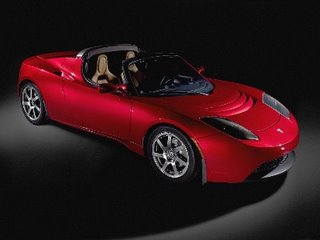Volvo XC60 Concept - Auto Shows - Car and DriverDecember 2006
Volvo XC60 Concept - Auto Shows - Car and DriverDecember 2006: "Volvo XC60 Concept - Auto Shows
Volvo set to enter the expanding, premium-small-ute segment in 2009.
BY DAVE VANDERWERP, December 2006
These images of the XC60 concept, released ahead of its official debut at the Detroit auto show in early January 2007, are a clear indication of what the production XC60 will look like when it makes its way to market in early 2009.
The XC60 is based on the Land Rover LR2 platform, which also underpins the new S80, while the styling is a bold take on the current XC90’s. The shape is definitely sleeker, looking almost stretched, with strong character lines running the length of the profile. Volvo says this makes the XC60 look like an “elegant, sporty coupe” but we see more of a wagon—think Cadillac SRX—but, to us, that’s not a bad thing.
Inside is a more futuristic version of Volvo’s floating center stack that we’ve already enjoyed in the S40 sedan and V50 wagon. To that, Volvo has added “visually floating” front and rear seats. Who knows, all this obsession with floating could lead to a Volvo blimp or hovercraft concept one day.
The XC60 concept also has Volvo’s new City Safety low-speed, collision-avoidance system, which is active at speeds below 20 mph and will automatically apply the brakes if the driver happens to be paying too much attention to his Blackberry.
Volvo didn’t mention what is powering this concept, but we wouldn’t be surprised to find the new, 235-hp 3.2-liter inline-six that powers the entry-level version of big brother XC90 as well as the LR2.
The “Small Premium Utility” segment—things like the Acura RDX, BMW X3, and Land Rover LR2—is the fastest-gro"
Volvo set to enter the expanding, premium-small-ute segment in 2009.
BY DAVE VANDERWERP, December 2006
These images of the XC60 concept, released ahead of its official debut at the Detroit auto show in early January 2007, are a clear indication of what the production XC60 will look like when it makes its way to market in early 2009.
The XC60 is based on the Land Rover LR2 platform, which also underpins the new S80, while the styling is a bold take on the current XC90’s. The shape is definitely sleeker, looking almost stretched, with strong character lines running the length of the profile. Volvo says this makes the XC60 look like an “elegant, sporty coupe” but we see more of a wagon—think Cadillac SRX—but, to us, that’s not a bad thing.
Inside is a more futuristic version of Volvo’s floating center stack that we’ve already enjoyed in the S40 sedan and V50 wagon. To that, Volvo has added “visually floating” front and rear seats. Who knows, all this obsession with floating could lead to a Volvo blimp or hovercraft concept one day.
The XC60 concept also has Volvo’s new City Safety low-speed, collision-avoidance system, which is active at speeds below 20 mph and will automatically apply the brakes if the driver happens to be paying too much attention to his Blackberry.
Volvo didn’t mention what is powering this concept, but we wouldn’t be surprised to find the new, 235-hp 3.2-liter inline-six that powers the entry-level version of big brother XC90 as well as the LR2.
The “Small Premium Utility” segment—things like the Acura RDX, BMW X3, and Land Rover LR2—is the fastest-gro"


